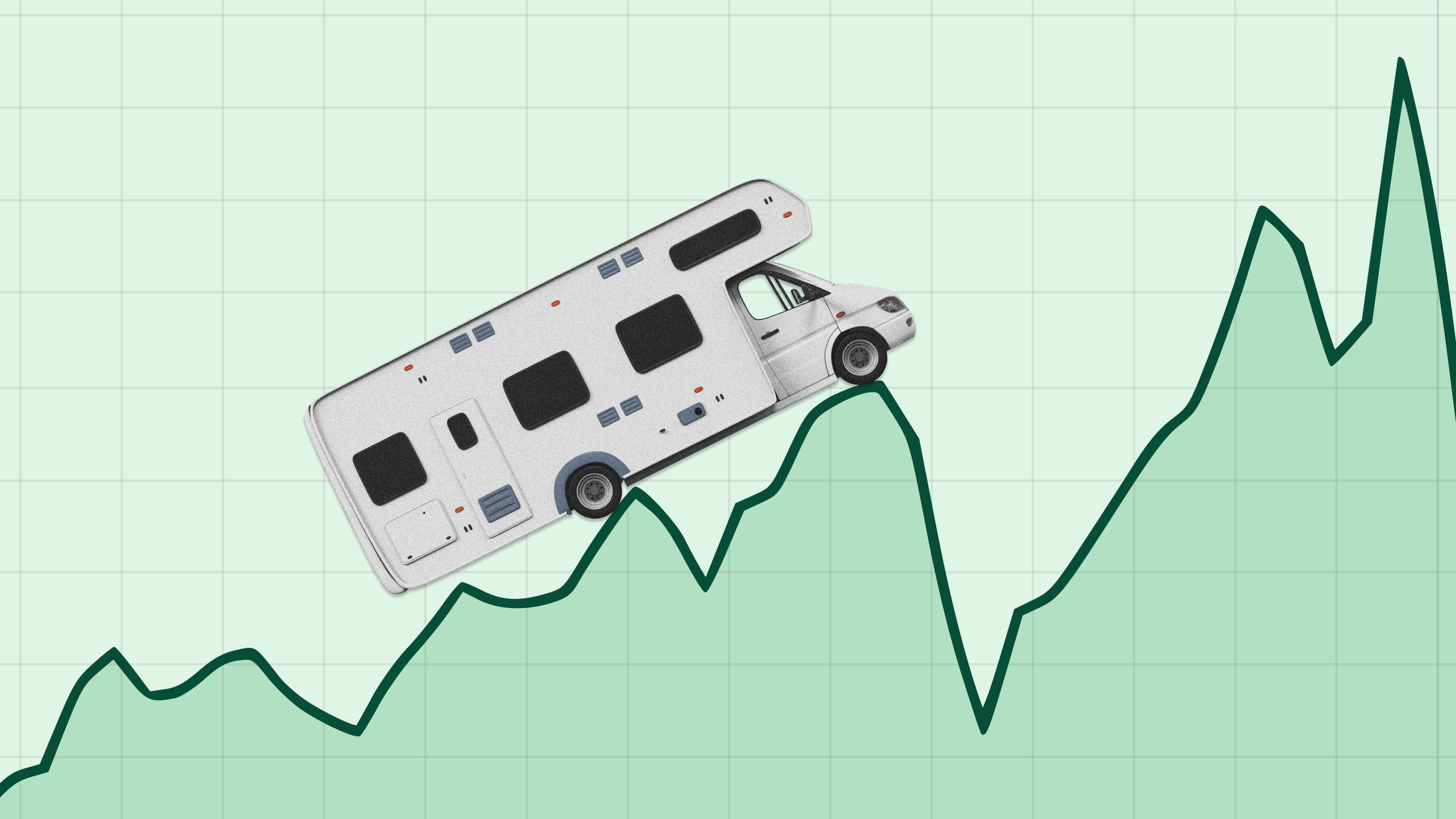Report Dives into ‘Ups and Downs of Camper Economics’ – RVBusiness – Breaking RV Industry News

EDITOR’S NOTE: The following is an edited excerpt of a report by The Daily Upside. Click here to read the article in full at www.thedailyupside.com.
Gross domestic product. Inflation. Treasury bill rates. Consumer spending. Household accounts. Money supply. The CBOE Volatility Index. The Big Mac Index. Vibes.
There are so many ways to measure the economy.
But, in these final weeks of summer, it would be wrong not to embrace the warm weather, the chlorophyll-flush vegetation, and the sunsets after 5 p.m. in order to look to that all-important indicator: RVs.
…
“RVs do extraordinarily well in predicting business cycles because they’re such a big, volatile consumption piece for most American consumers,” economist Michael Hicks of Ball State University told American Public Media’s Marketplace earlier this year.
With new towable trailers costing anywhere from $20,000 to $100,000 and motorhomes $50,000 to well into the hundreds of thousands, RVs are big purchases, meaning sales are sensitive to economic headwinds and consumers’ perceptions of the economy — a so-called vibecession would do sales no favors.
They’re also overwhelmingly debt-backed. Jon Ferrando, the CEO of Fort Lauderdale-based Blue Compass RV, which owns 103 RV dealerships in 33 states, told Reuters last year that 80% of customers finance their purchases. That makes the industry especially sensitive to interest rates.
RVs also simply represent a lot of people. There are 11.2 million RV-owning US households as of 2021, a 62% increase in the past 20 years, according to the National RV Dealers Association. More than a fifth of the market, according to the Association, is now made up of 18- to 34-year-olds.
Meanwhile, there remains a large, outdoorsy consumer base to be won over: 92 million American households identified as campers in 2022, according to a survey by Kampgrounds of America, up from 79 million in 2019.
…
For the biggest publicly traded firms in the RV space, the boom-and-bust cycle of the last four years has been, well, boom and bust.
After making $2.4 billion in annual revenue in 2020, Minnesota-based RV manufacturer Winnebago made $3.6 billion in 2021 and $5 billion in 2022 before falling back to $3.5 billion last year. The company’s share price is down about 21% this year.
THOR Industries, the Indiana-based RV manufacturer, has also flagged “challenging market conditions” in North America this year. In June, Thor cut its fiscal 2024 revenue outlook to $9.8 billion to $10.1 billion, down from an estimate of $10.0 billion to $10.5 billion. Third-quarter sales amounted to $2.8 billion, down slightly from $2.9 billion during the same period in 2023.
Click here to read the article in full at www.thedailyupside.com.





